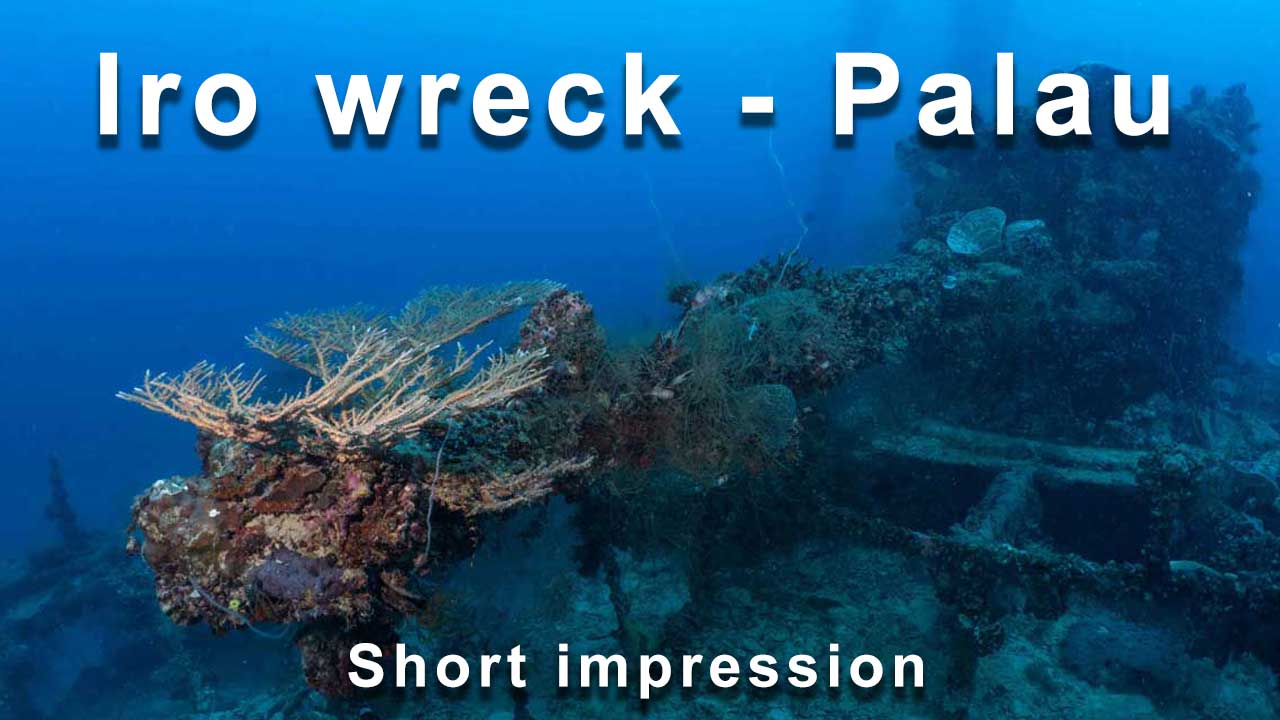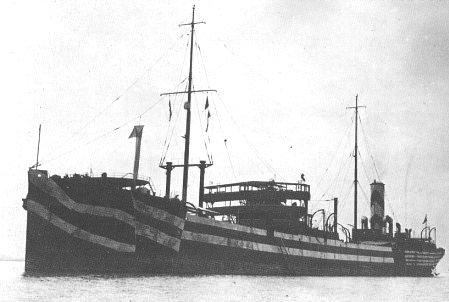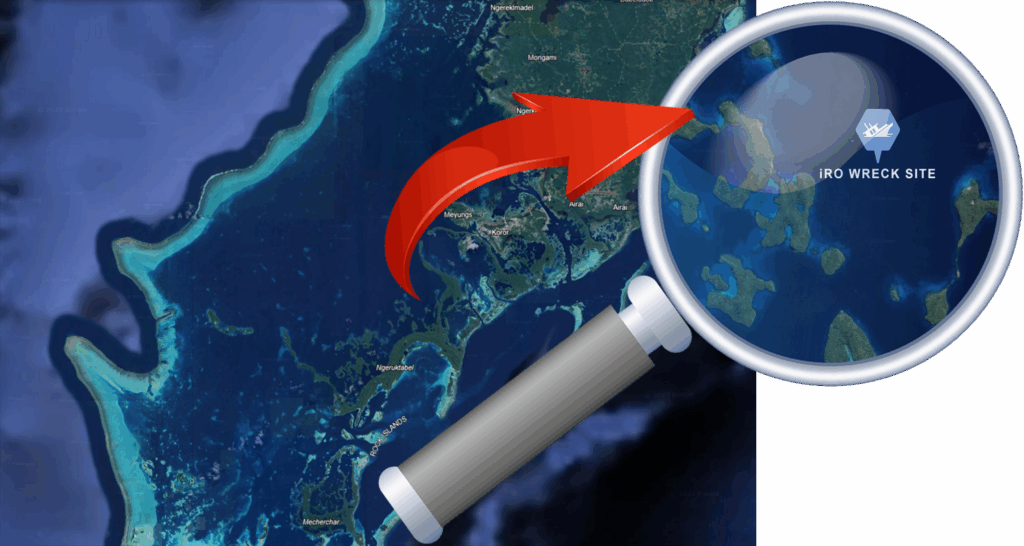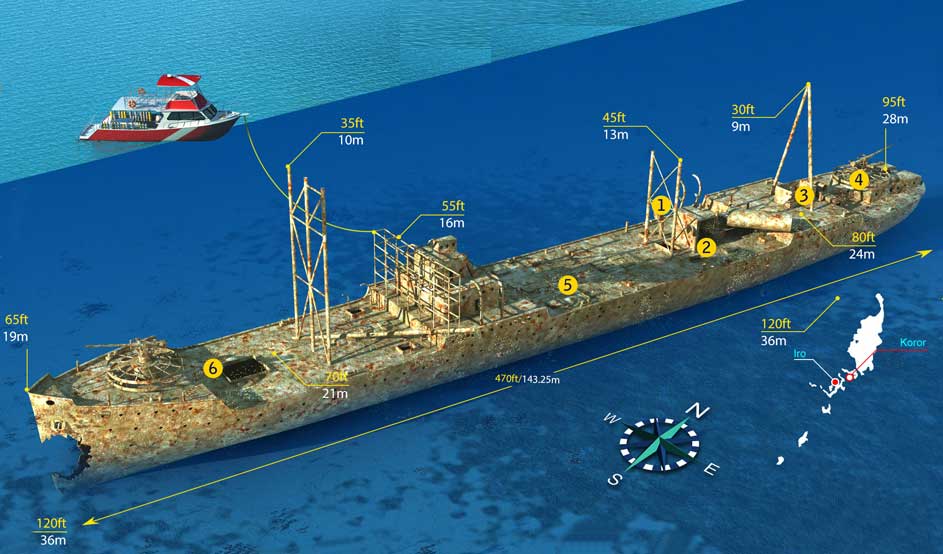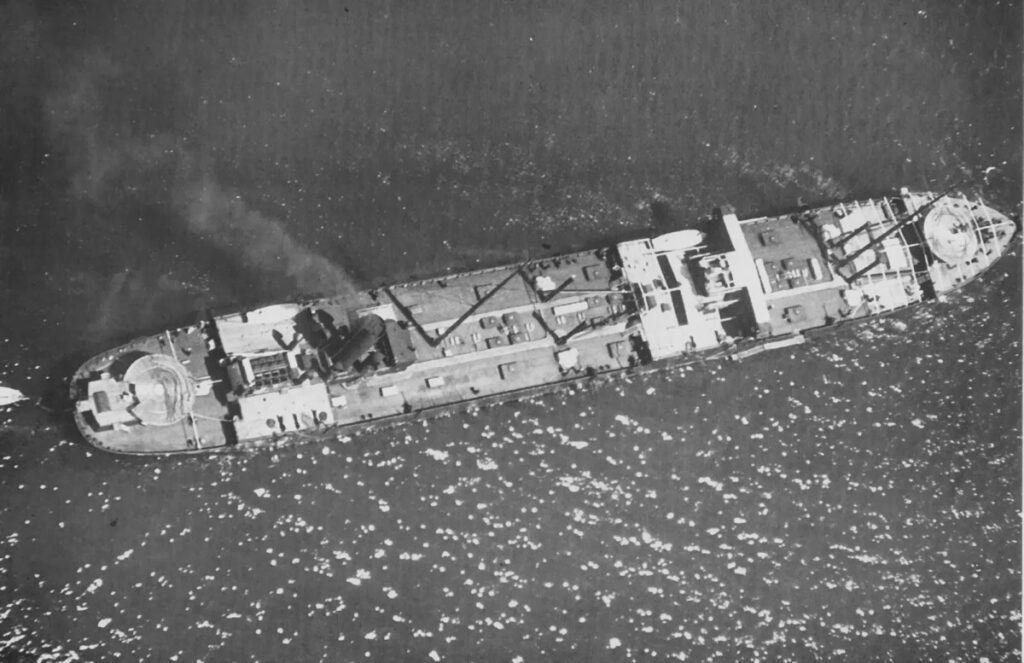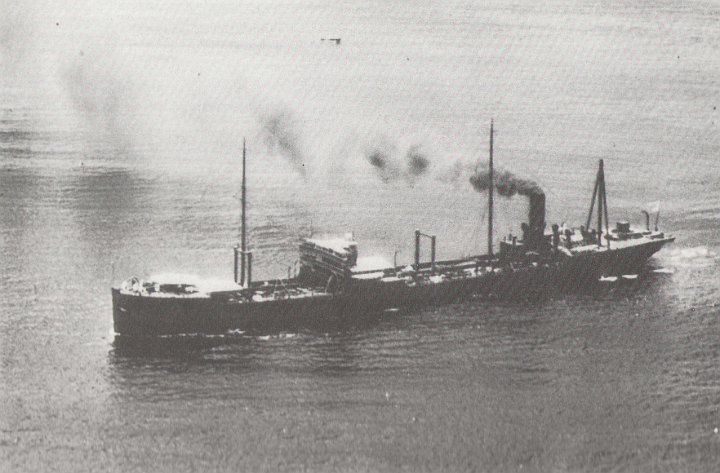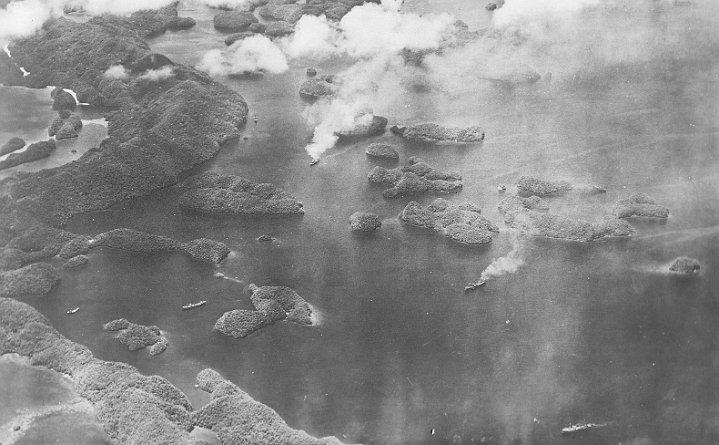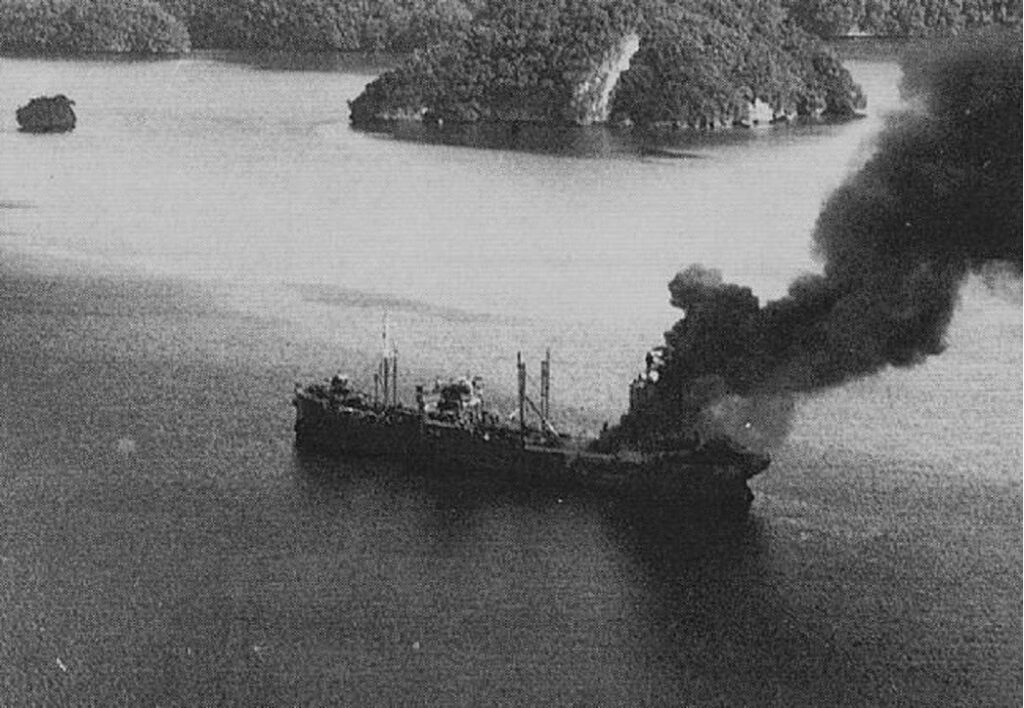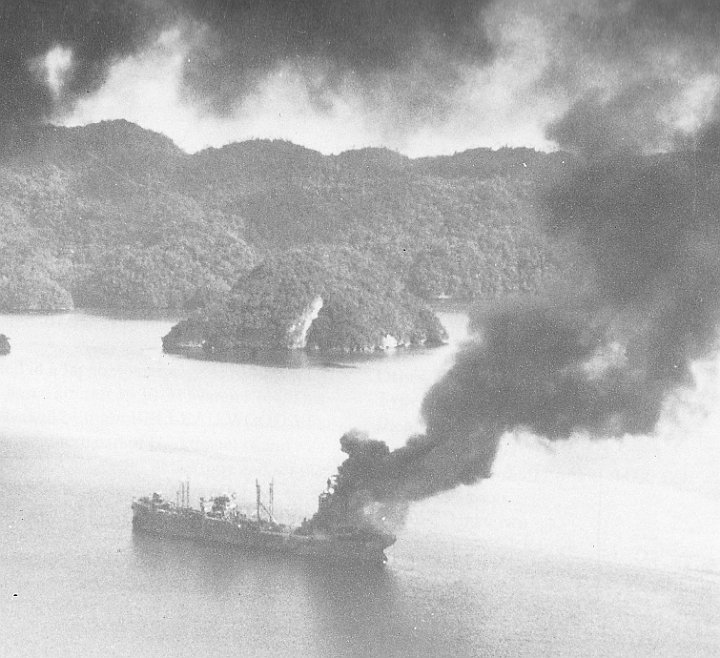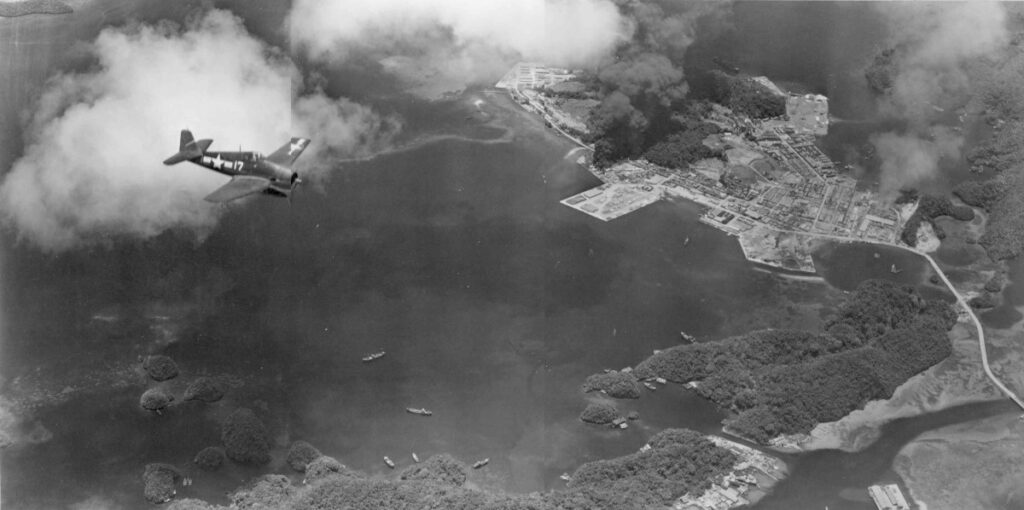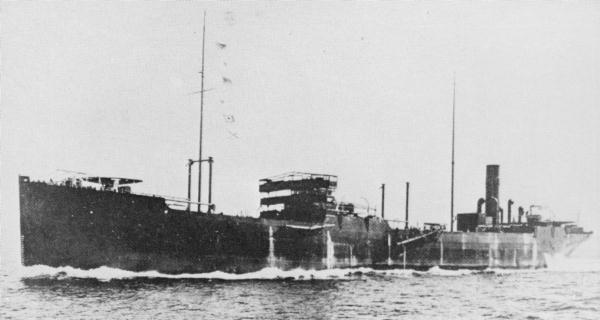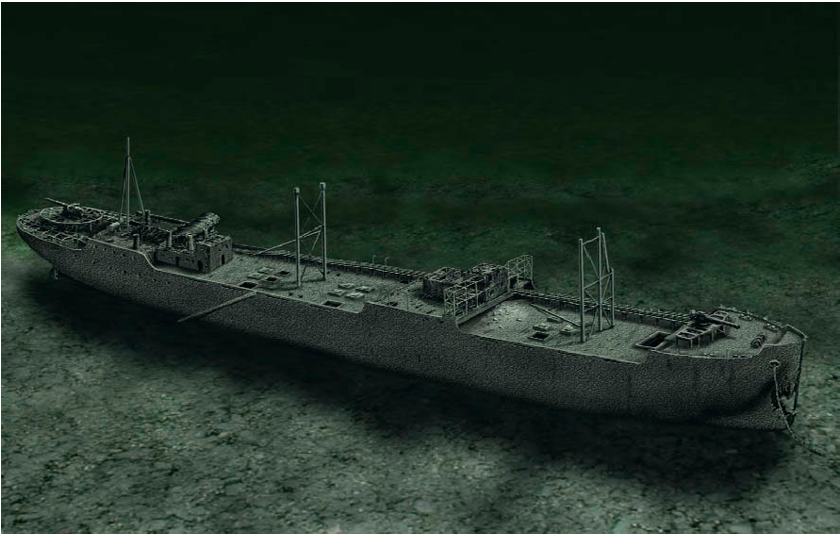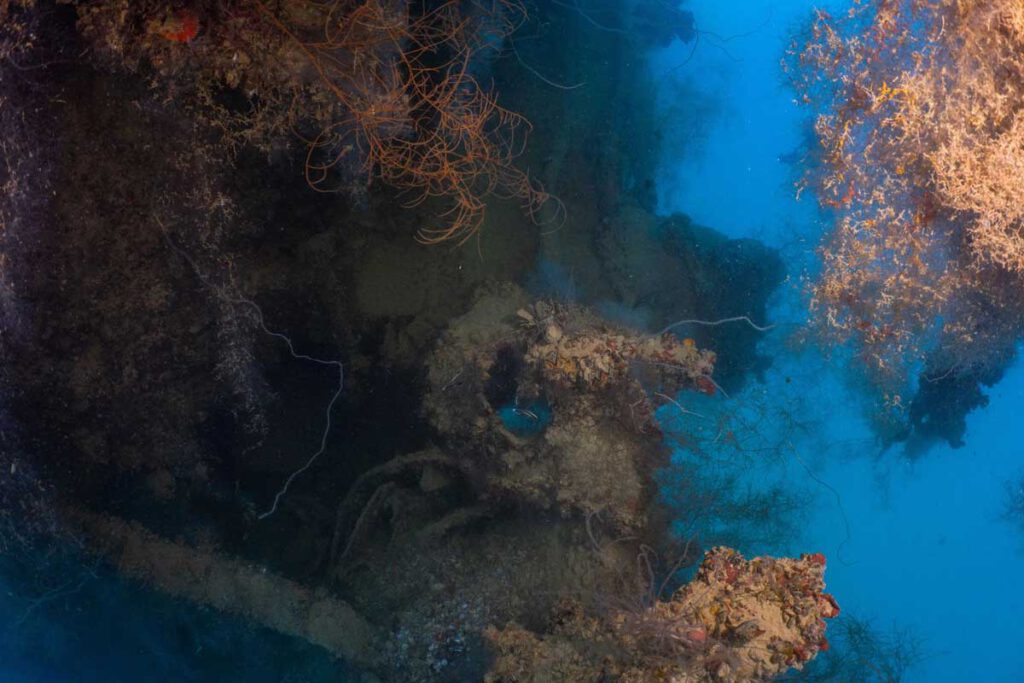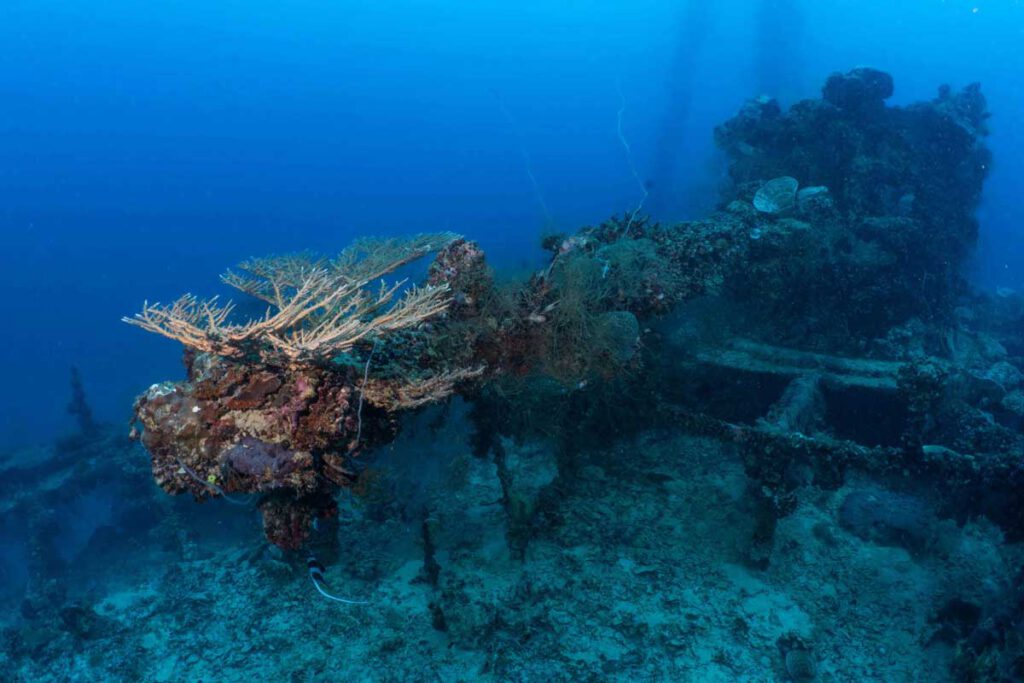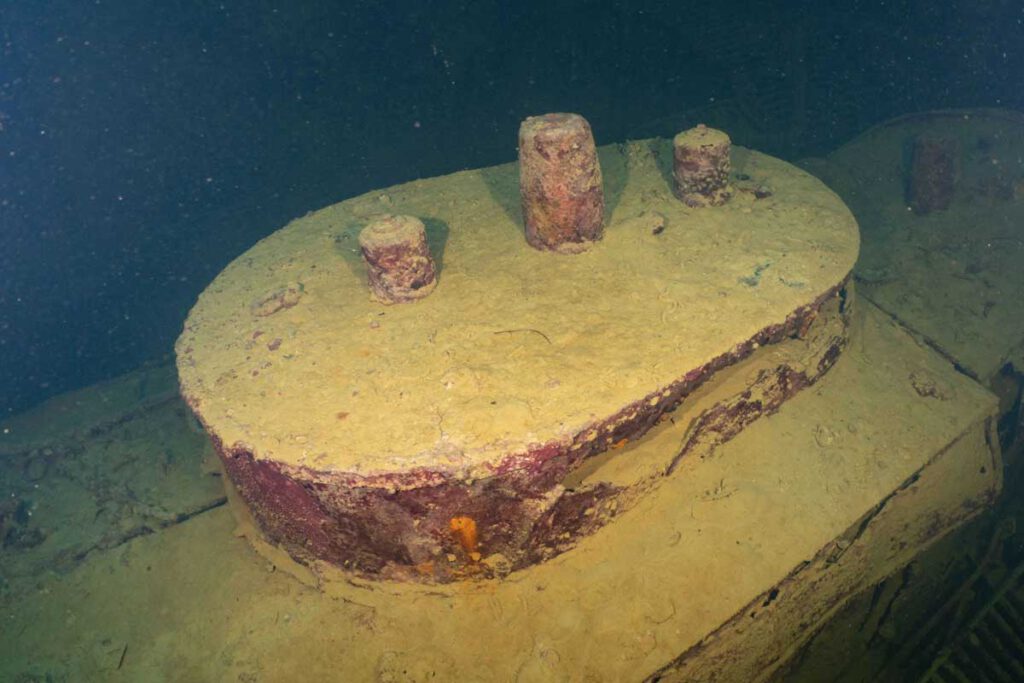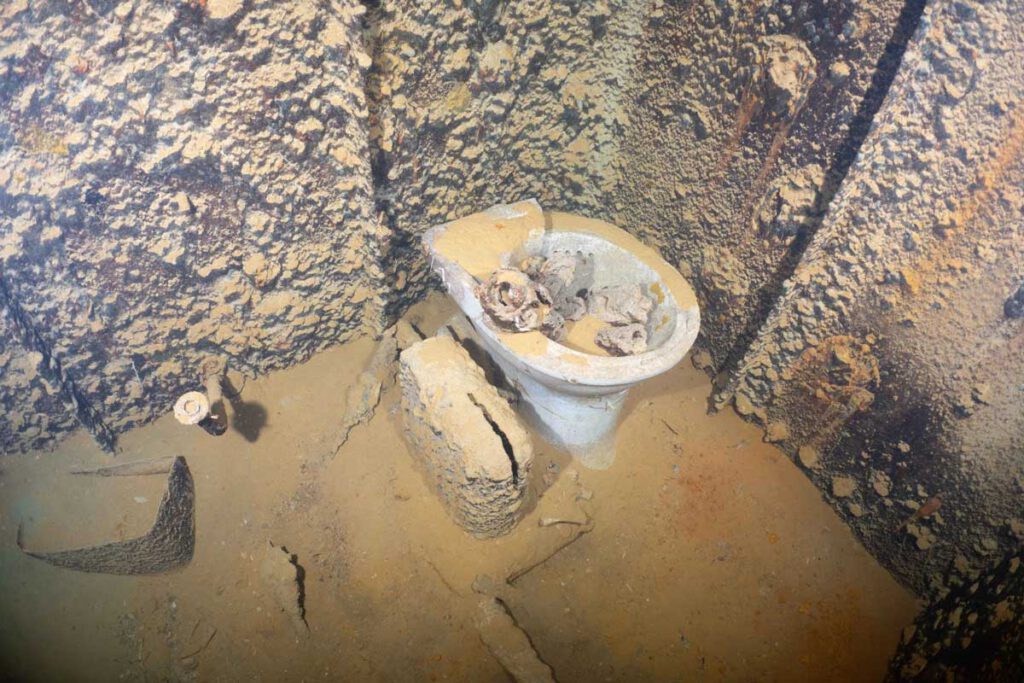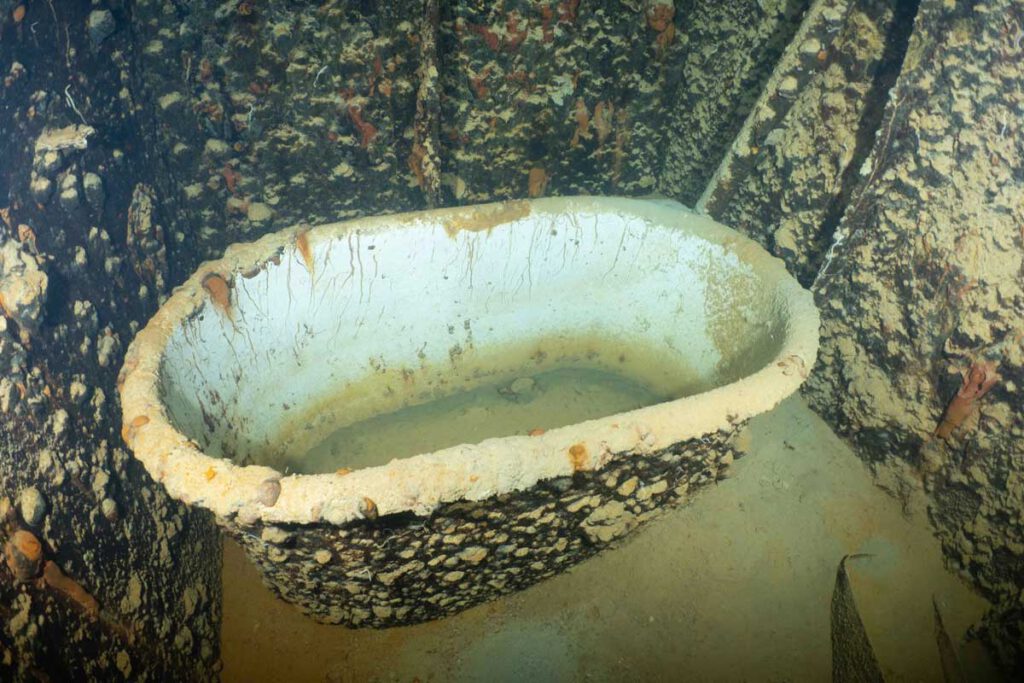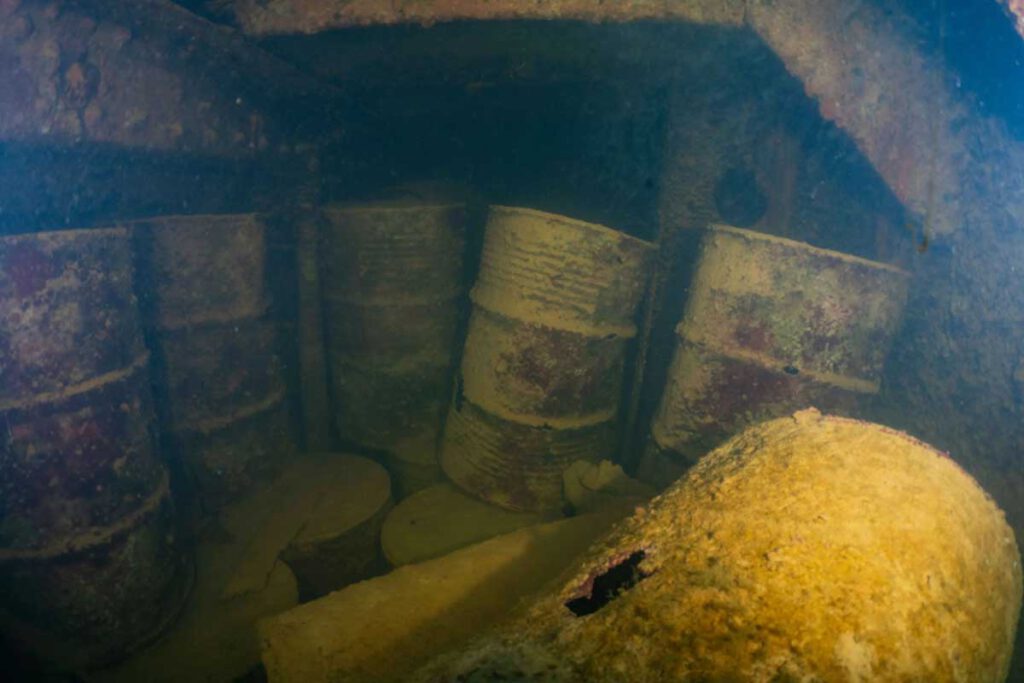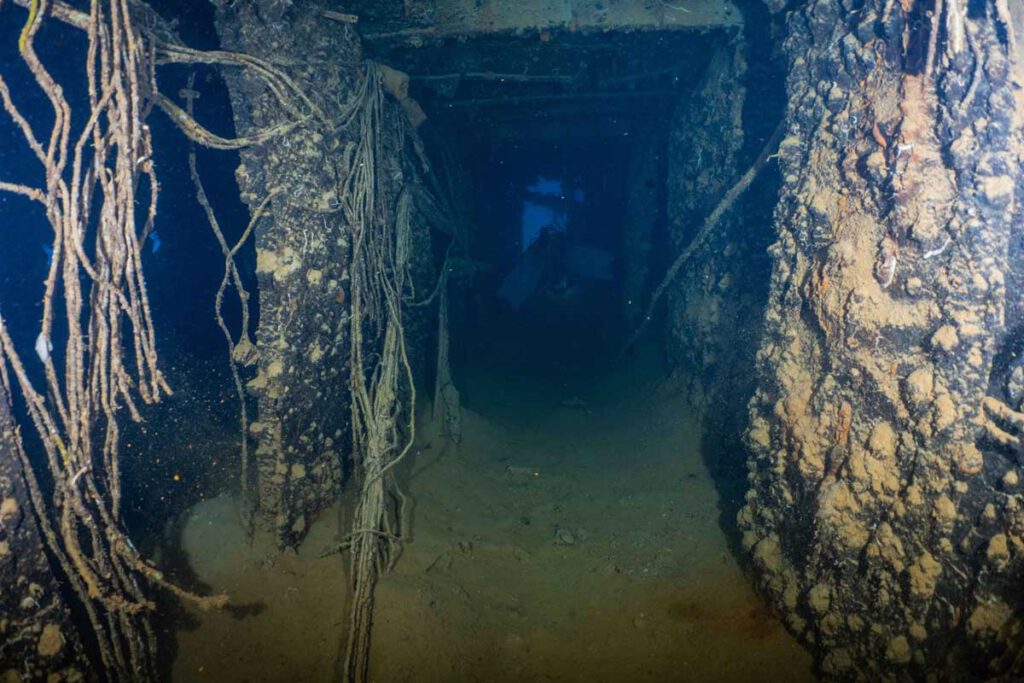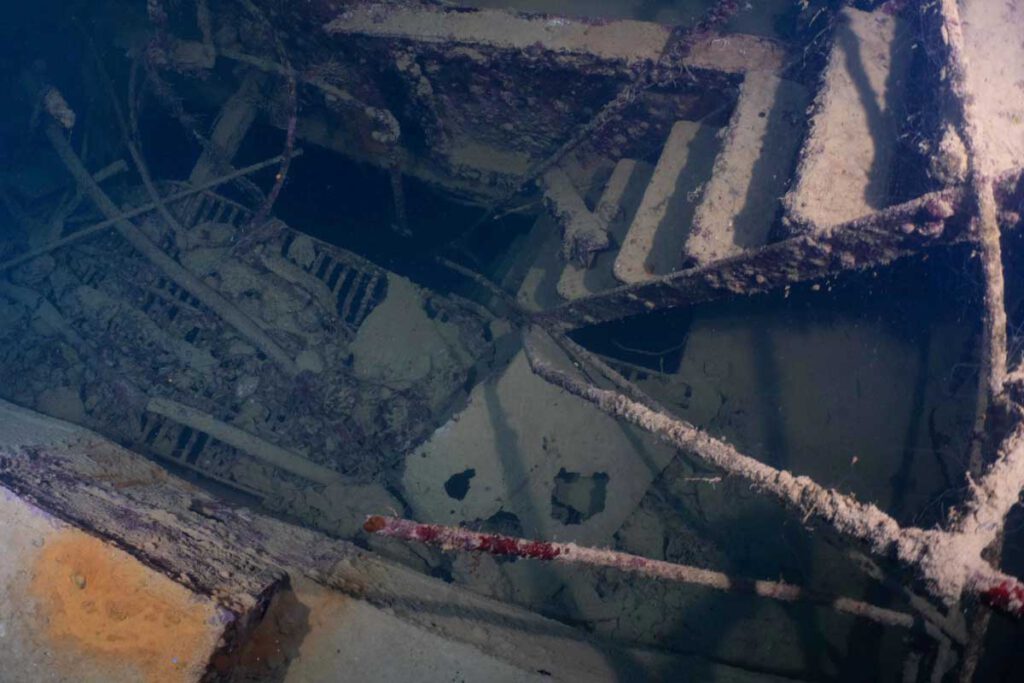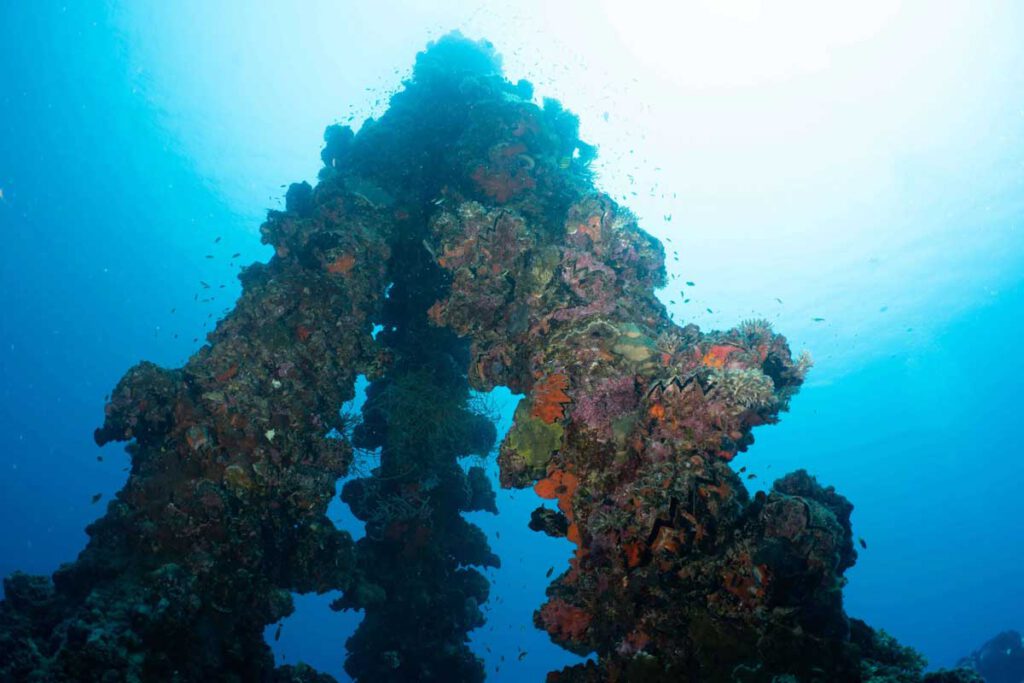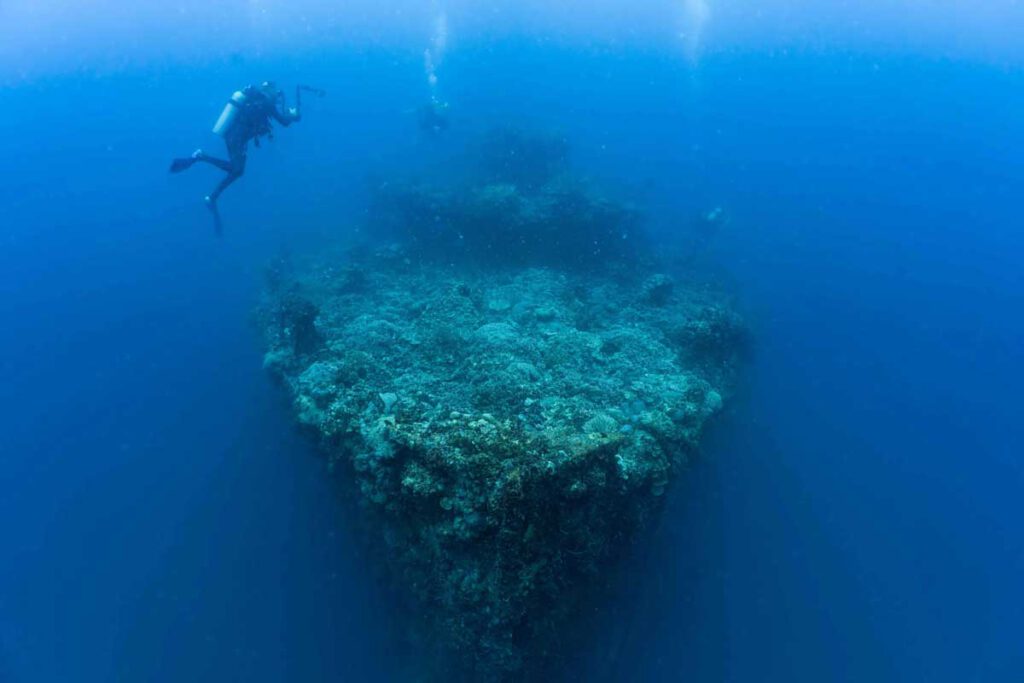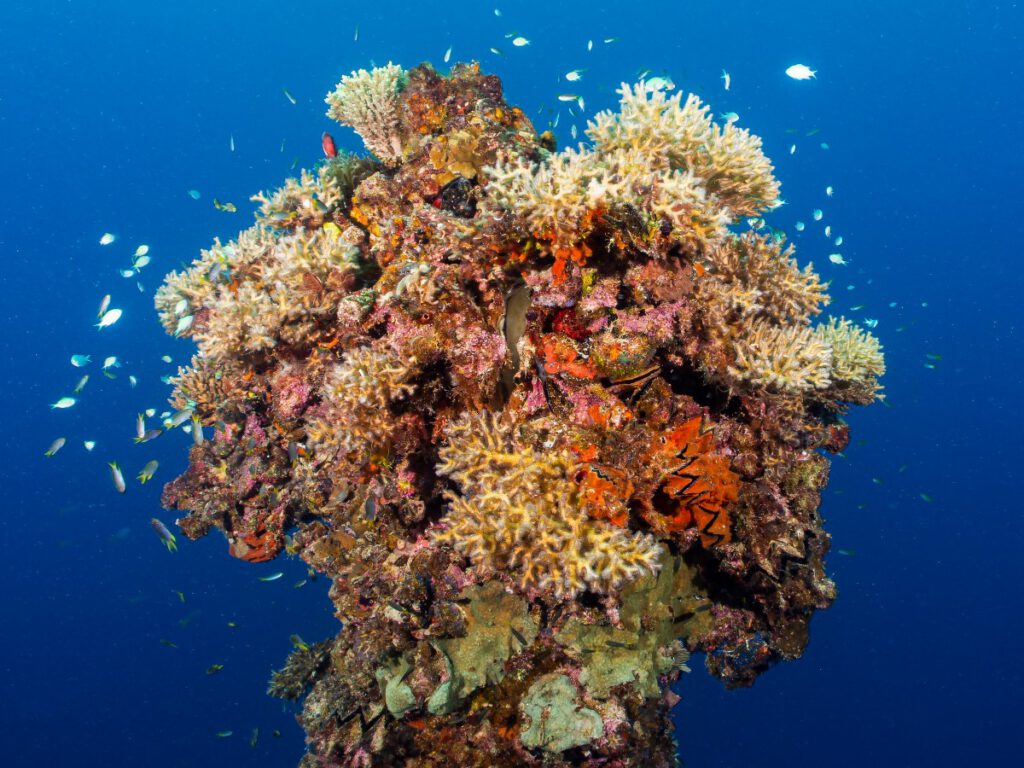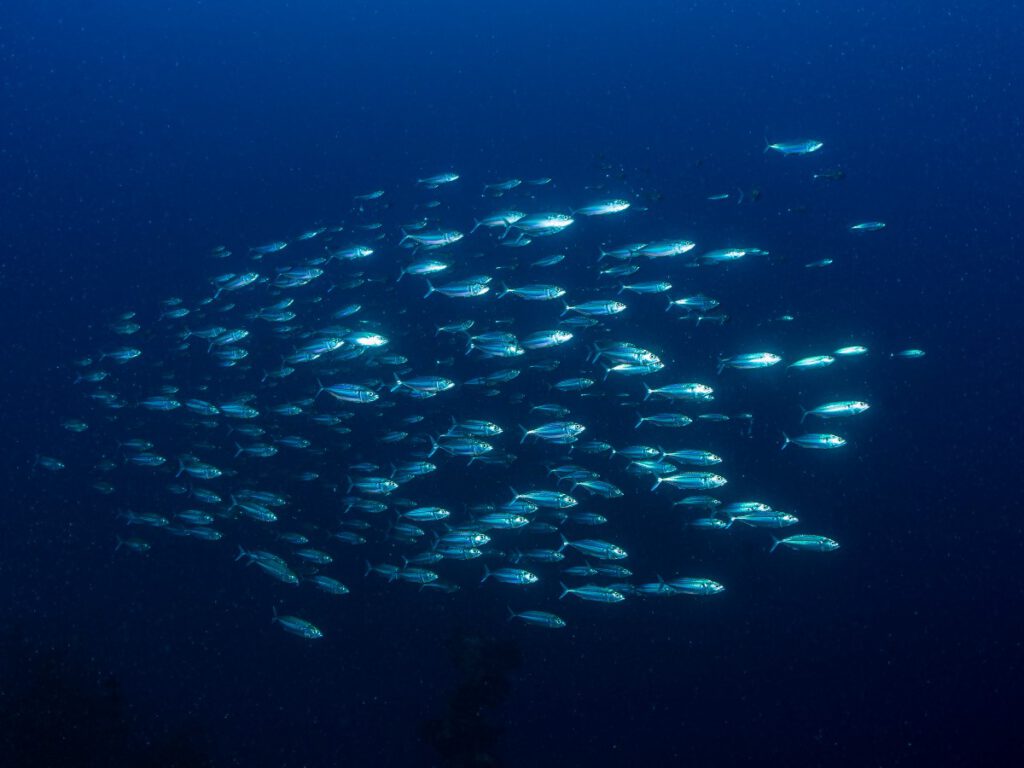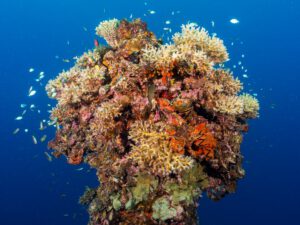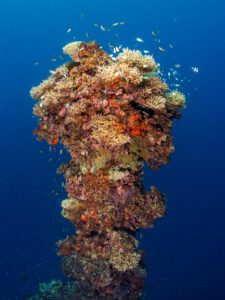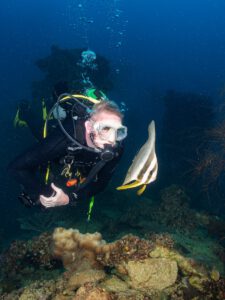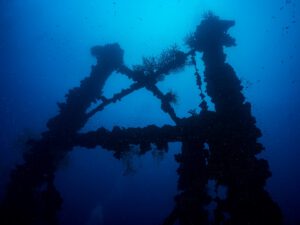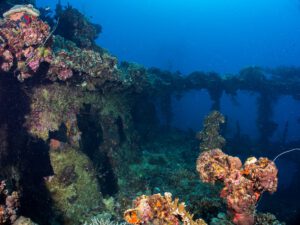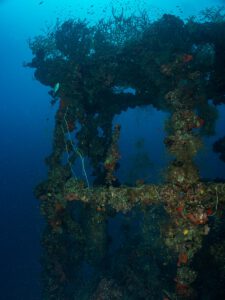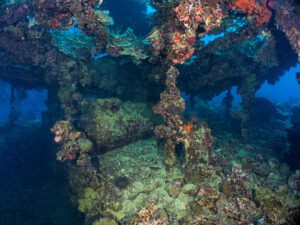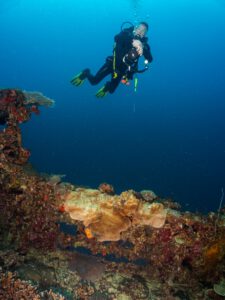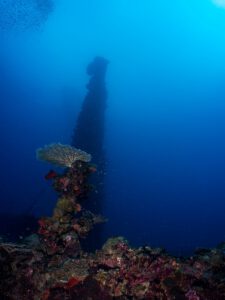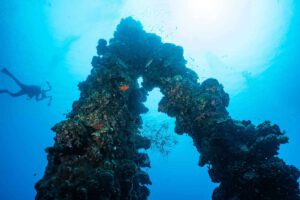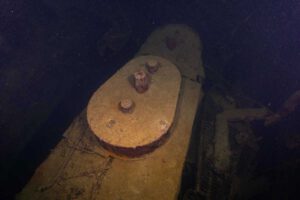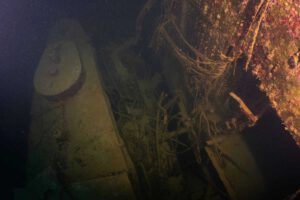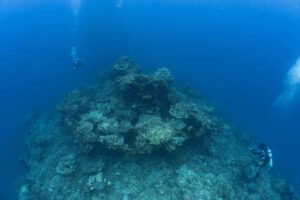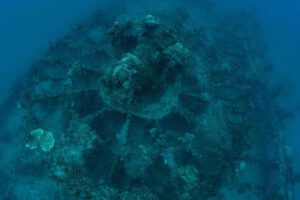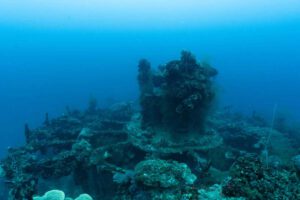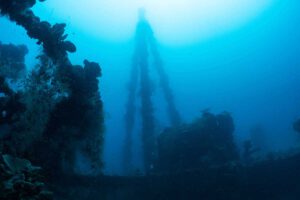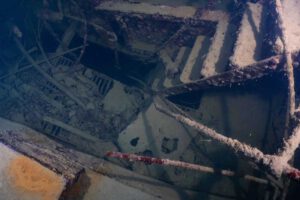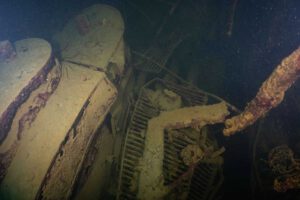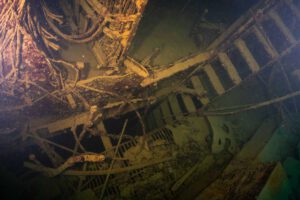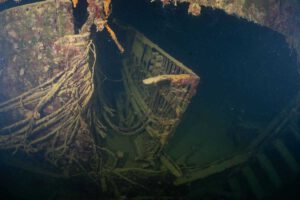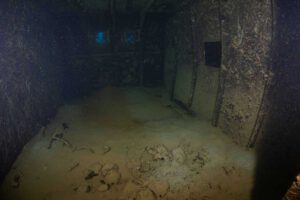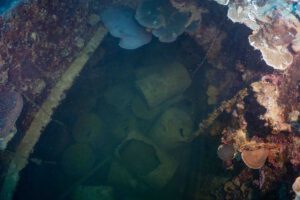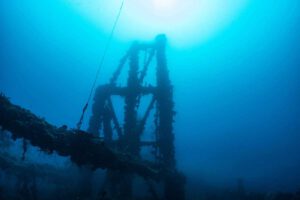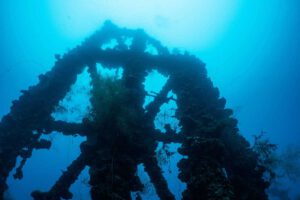IJN Iro - Palau - Micronesia
The Iro Wreck offers an unforgettable diving experience to explore history and see how nature has overtaken the ship over the years.
The Iro was a fleet oiler and supply ship built-in 1922 by the Osaka Iron Works. On March 22, 1944, the ship was torpedoed by the USS Tunny and later bombed during Operation DESECRATE ONE
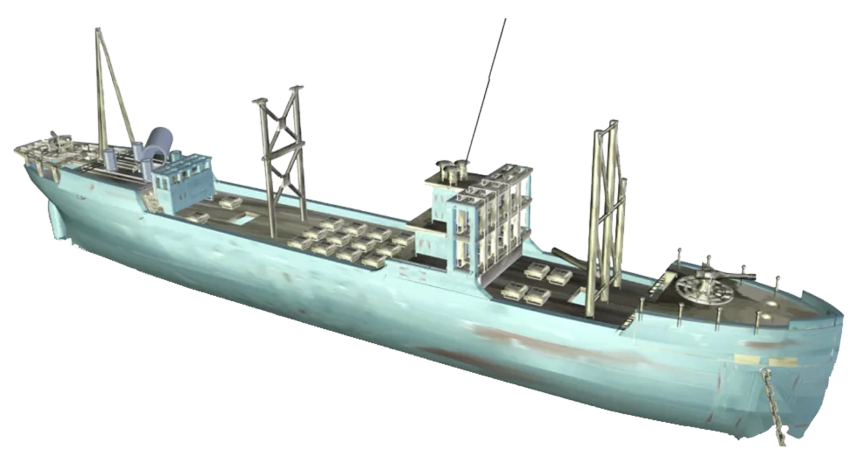
Note that several pictures on this page were taken by Brett Eldridge during our joint dive on the Iro in 2022
IJN Iro - Palau - Micronesia
The Iro was one of a fleet of 7 Notoro class of oilers (Notoro, Shiretoko,Erimo, Sata, Tsurumi and Shiriya)
This Japanese oil tanker was bombed multiple times while at anchor, which killed 50 crew members, including the captain.
The Iro Wreck was a fleet oiler and supply ship built-in 1922 by the Osaka Iron Works.
It’s often named “Iro Maru” however the term MARU, usually added as a suffix to the name of a Japanese ship, is not added to the name of this ship.
This is due to the military origin of the Iro, as the term Maru is used to identify civilian ships.
The Iro is the largest wreck in Palau, with it’s 143 meter lenght and weighing 14,050 tons. She now rests n the Urukthapel Anchorage, 15 minutes South East from the coast of Koror.
Funny she was powered by coal, was a steamer, even though she carried oil for the engines of other ships. One of only 9 oilers in the Japanese navy in WWII, a major weakness.
The story & the dive
The DATA
• Builder: Osaka Iron Work’s Sakurajima factory.
• Laid down: 2 September 1921
• Launched and named IRO: 5 August 1922
• Completed and registered in the Kure Naval District: 30 October 1922
• Class & type: Notoro-class replenishment oiler
• Displacement: 15,400 long tons (15,647 t)
• Length: 138.68 m
• Beam: 17.68 m
• Draught: 8.08 m
• Oil Cargo Capacity: 8,000-tons.
• Propulsion:
o 1 × triple expansion reciprocating engine
o 4 × Kampon water tube boilers
o 1 shaft
o 3,750 hp (2,796 kW)
• Cruising speed: 9 knots (16.5 km/h)
• Max. speed: 14 nots (26 km/h)
• Armament:
o 2 × 120 mm (4.7 in) L/45 naval guns
o 2 × 76.2 mm (3.00 in) L/40 AA guns
The Story
The Imperial Japanese Navy (IJN) Iro was an oil tanker built in the early 1920s in Osaka, Japan. It is a relatively large wreck with a length of 470 feet and a beam of 58 feet. Unlike some of the other wrecks in Palau, the Iro was NOT a merchant ship that was converted for wartime use. It was commissioned and built specifically as a Navy oil tanker.
The Iro had a cruising speed of 9 knots and a maximum speed of 14 knots and had a crew of 160.
She was fitted with two low-angle 5.5-inch, 50 caliber guns on rotating platforms, one at the stern and one at the bow.
She also had two high-angle anti-aircraft guns and four machine guns.
The Iro has a lot of interesting backstory and she was an active oil tanker throughout the Pacific in WW II.
As the U.S. and other Allied forces made their advancement in the Pacific Theater during WWII, an important aspect to winning the war was cutting the Japanese supply lines and gaining a foothold on crucial launch points for attacks on the Philippines and, eventually, the Japanese Mainland.
In mid March 1944, the USS Tunny (SSG-282) came across the Iro on her way from the Philippines to the Palau.
This was a week before Operation Desecrate 1, she was part of a large convoy that was spotted by the US submarine USS Tunny.
A battle ensued between the US submarine and the Japanese escort destroyer Michishio. During that battle, the Iro was hit by a torpedo in the bow, ahead of the collision bulkheads.
The Iro was badly damaged but didn’t sink and limped off to Palau for repair on 23 March 1944.
Seven days later (March 30) Operation Desecrate one began. US Navy had undertaken Operation Desecrate One with the intend purpose of softening up the Japanese strongholds in Palau.
Tankers were valued targets and the Iro nd her sister ship, the Sata, was quickly spotted by the dive-bombers which dropped six 1,000 pound bombs in her vicinity and reported one hit.
However, she was still afloat a day later when a squadron of SBD Dauntless bombers attacker her again. She was hit by another 1,000 pound bomb on the starboard aft quarter. The bomb had a delayed fuse and exploded right in the engine room which resulted in a large fire.
Due to the various watertight compartments in her design, she was mortally wounded but didn’t sink right away. The stern started to sink and the bow strained the anchor and titled up into the air exposing the earlier torpedo damage.
She continued to burn for several days and then sank almost three weeks later on 17 April 1944.
Iro's final logs
31 March 1944:
Palau Harbor. TF 58’s planes find and attack IRO anchored in a sheltered lagoon close to Koror, Peleliu. She sustains a direct bomb hit in the engine-room and is set afire. Of 250 soldiers on board, 200 survive, but Captain Kitamura is KIA. He is promoted Rear Admiral, posthumously.
17 April 1944:
IRO burns for days. On this day, she sinks in 40 meter of water. Her funnel lies horizontally where it falls across the deck.
10 May 1944:
Removed from the Navy List.
OPERATION DESECRATE ONE
Surrounded by the splendor of these islands, it’s nearly impossible to comprehend the gory battles that took place here during World War II.
But as the site of one of Japan’s strongest and most critically located naval bases, Palau was an irresistible target for the United States.
Operation Desecrate 1, one of the major battles in Palau, consisted of a merciless, 48-hour-long air raid that killed thousands of soldiers, sank or damaged 36 Japanese ships and confirmed Japan’s wartime shift to a defensive posture.
Who is who?
The Iro and her sister ship, the Sata, sank during Operation DESECRATE ONE within 300 meter from each other in the Urukthapel anchorage.
Ever since their discovery, numerous efforts have been made to identify which ship is which.
Underwater it is easy to tell one ship from the other, one sits upright and the other has capsized. For the sake of continuity, we will follow Dan Bailey’s identification and will refer to this wreck as the IRO (Klaus Lindemann, another wreck expert, identified her as the Sata).
The Dive
Being the largest wreck in Palau it is impossible to see all this massive ship has to offer in just one dive.
The Iro Wreck offers an unforgettable diving experience to explore history and see how nature has overtaken the ship over the years.
Follow the mooring line to the forward tower and onto the huge and wide deck. The bow is pointing east.
The deck has three masts and gun turrets now serving as home for a plethora of hard corals.
On top of the bow is a very large gun mounted on a circular platform. The gun barrel diameter is 7 inches (17.8 cm) and the length is 4.2 meters.
The gun is aiming down at a 20-degree angle and is completely encrusted with corals and marine life.
If you are interested in the bow damage, follow the ship’s starboard anchor chain down along the side of the ship. The port anchor is still in place.
Starting at 24 meters the torpedo damage becomes visible; the hole is now covered with black coral growth. Swim up again to deck level, going aft, examine the deck, its fuel pipes, hoses hatches and portholes.
The bridge is open and easily accessible due to fire damage as a result of the bombing.
Hoever the telegraph and all the instrumentation has lbeen stripped out.
The crew quarters are under the bridge; do not attempt to go through unless you are fully prepared to penetrate the ship.
Inside the intact accommodation areas, you swim down long companionways as ambient light filters into rooms through open portholes and illuminates the remains of bathtubs and brass beds.
Further down the deck you will reach the engine room; it is large and open. The boiler can be easily identified along with the catwalks and railings.
As you near the stern another big loading tower can be seen. Past the loading tower is the aft gun. This gun is identical to the bow gun.
To thoroughly explore this interesting wreck, more than one dive is needed!
The visibility at this site can vary from 30 meters to 10 meters.
The forward half of the wreck usually offers better visibility than the aft section.
Flora & Fauna
Equally stunning is the overwhelming size of the ships proportions in the clear blue water.
The huge masts, kingposts and deck cranes climb nearly to the surface, and like the rest of this behemoth, are totally covered in soft sponges, sea whips, staghorn coral, giant clams and oysters.
On the deck you can find cavorting nudibranchs and giant mushroom corals playing host to a variety of crustacea, fish and brittlestars.
Her kingposts are festooned in zigzag clams, soft corals and other invertebrae. From the deck these magnificent structures with their crossbraces make fantastic natural light photographic images.
In the main forward cargo hold you can find black coral trees, lionfish and numerous anemones, including their attractive greenish bubble anemones,home to one of the most attractive anemone, the tomato clownfish.
The masts are the perfect way to finish your dive with large anemones and clownfish, lionfish and excellent corals in the shallows – perfect for the safety stop.”
Some pictures of the wreck
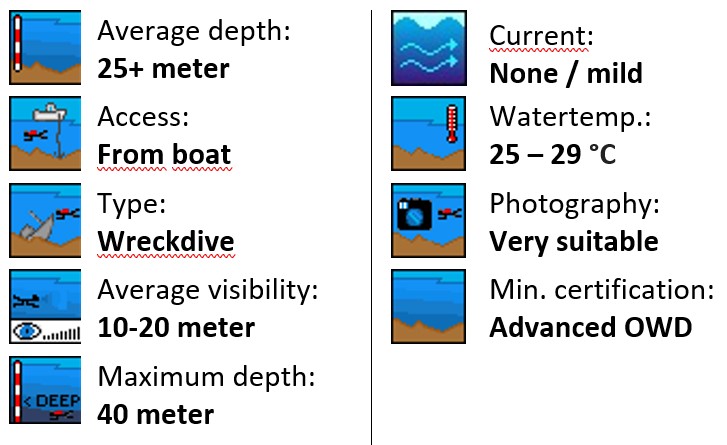
Conclusion
The Iro found it’s last restingplace in the Urukthapel Anchorage, 15 minutes southeast of Koror. The Iro is a monstrous upright structure on a depth of 40 meters. This wreck is a WWII time capsule with a dramatic history, a memorable and fantastic wreck and well worth a few dives.
This wreck has a lot to offer, from exploring the inside of the ship with lots of interesting rooms and corridors, to the amazing corals growing along the ship.
Marine life will also surprise you, the aft mast and the towering goalposts amidships, are carpeted by anemones that provide homes for dozens of tomato anemonefish.
This site is also notorious for its resident large groupers and batfish.
Please keep in mind that this wreck is a waar grave, 50 crewmembers lost their lives on this ship.
Always dive it with respect!
